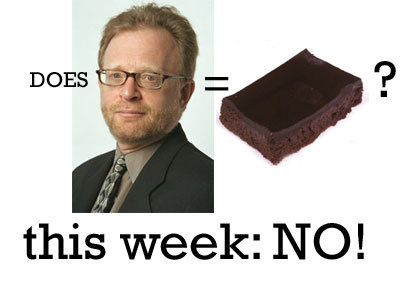It appears that Sam Tanenhaus will be expanding his editing duties to the Week in Review section, which he will also be editing. Apparently, one section isn’t enough for good old Sammy Boy. Bill Keller hopes to work Tanenhaus to death until he leaves the paper. Keller writes, “I can’t wait to see what creative energy he will bring to the continual reinventing of the Week in Review.” Now that’s quite cruel — the kind of thing I expect from someone dousing salt on the participants in a snail race and then shouting, “Go go go!” as the competitors dissolve just before the finish line. I actually felt sorry for Tanenhaus, until I was reminded by Jim Sleeper that Tanenhaus can’t stop prioritizing demagoguery before debate. Really, just about the best thing that Tanenhaus can do under these circumstances is throw in the towel and go back to working on the Buckley bio. It’s clear that’s where his true passion lies.
Category / Tanenhaus, Sam
Did Someone Hook Tanenhaus Up With Some Acapulco Gold or Something?
I am absolutely stunned to see this week’s edition of The New York Times Book Review contain not one, but TWO, pieces devoted to comics: Stephanie Zacharek’s review of The Completely Mad Don Martin and Douglas Wolk’s column. Plus, there’s this cheeky review of the David Levy book and Liesl Schillinger reviews Zeroville and makes this very astute observation: “Both Biskind’s and Erickson’s books begin with the Manson murders and an earthquake.”
Regrettably, Joe Queenan is also in there with another bland attempt at wit. One can’t have everything. But I’m truly astonished to see a far more relaxed attitude in place at Tanenhaus’s rag this week and, for this, I must applaud this week’s issue.
NYTBR: Safer Than Pat Boone
If there are four words that best describe the NYTBR‘s Top Ten Books of 2007, they are: We Take No Chances.
Sam Tanenhaus: You’ll Like Our Translation Pick Or Else!
Languagehat unearths a hilarious online expose involving Sam Tanenhaus’s failure to dictate to the masses. It seems that Tanenhaus attempted to strong-arm his readership into loving the Richard Peevar and Larissa Volokhonsky translation of War and Peace and his readers, begging to differ, express their preference for other translations. Peevar then shows up, defends his translation, is then humiliated, and then comes back again with a whiny defensive rejoinder. And Sammy Boy just can’t stand it! How dare the readers think for themselves? How dare they fail to recognize the Grand Importance of the New York Times Book Review?
Needless to say, I don’t have to analyze this week’s issue or dig up the Brownie Watch to tell you that this kind of hubris from Tanenhaus, his inability to listen to readers and his colossal misunderstanding of dissent among the blogosphere, deserves no brownies.
No brownies for you, Sam! Not this week, or for the next four weeks! Maybe if you considered that the people who read the New York Times actually have brains inside their heads, you might do better.

(Thanks, Kári!)
More on Lee Siegel’s Screwup
Josh Glenn has a comparative roundup and Siegel’s offending review can be found here. No brownies for you, Tanenhaus! And, man, it seems like you really need them these days.